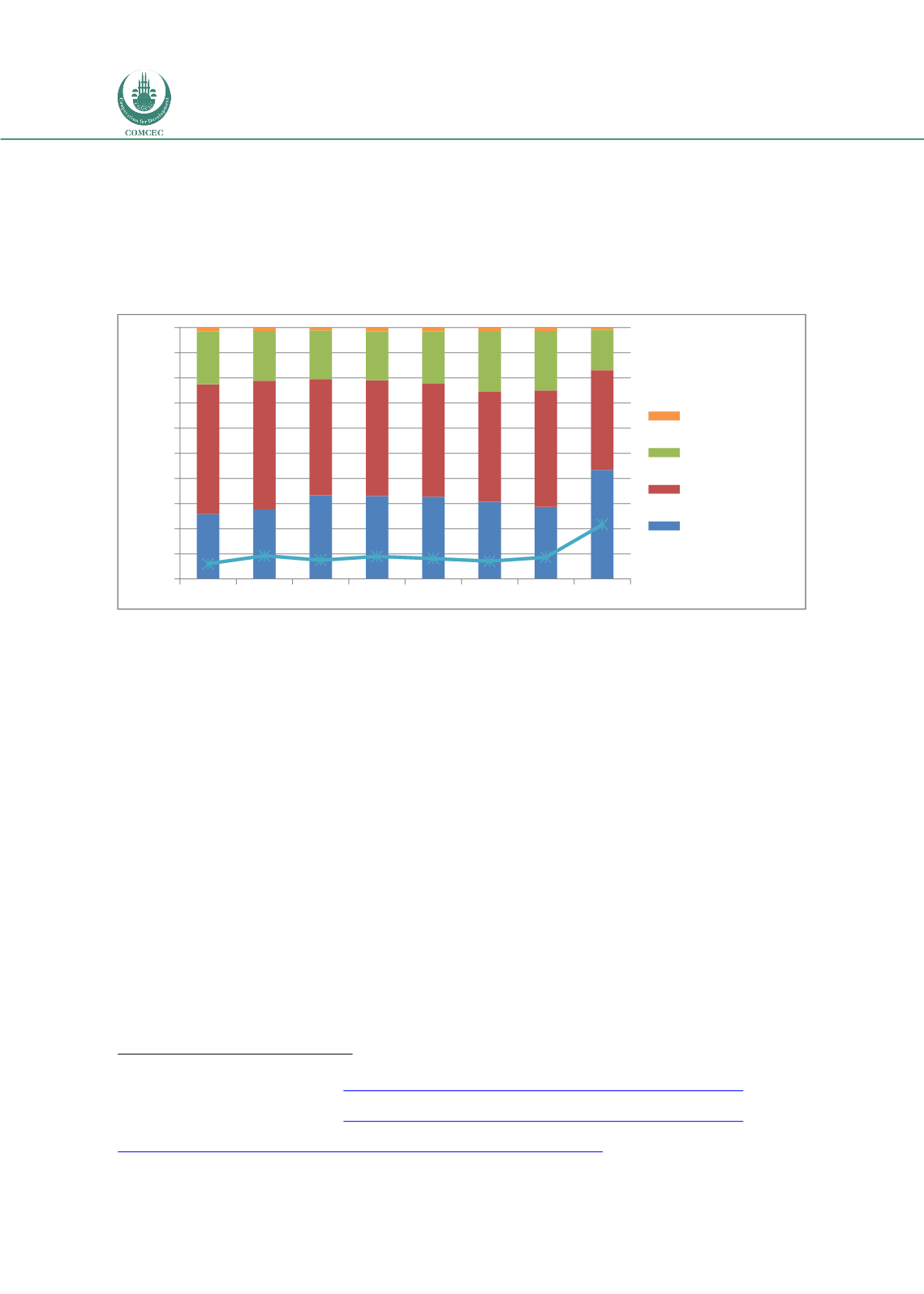

Forced Migration in the OIC Member Countries:
Policy Framework Adopted by Host Countries
152
Swedish authorities have granted some form of protection in over 70 percent of decided
cases.
121
This marks a substantial increase from protection rates between 2008 and 2012
when just one third of decided applications were granted protection.
122
The increased overall
protection rate has almost certainly been driven by the growing numbers of nationals from
countries like Syria and Iraq with high recognition rates.
Figure 22: Asylum applications, share by age group, 2008-2015
Source: Eurostat, "Asylum and first time asylum applicants by citizenship, age and sex Annual aggregated data
(rounded) [migr_asyappctza]," updated March 18, 2016
Asylum applicants whose claims for protection have been rejected pose a growing concern for
both national and local policymakers, as they generally have no legal status in Sweden once
they are ordered to return to their country of origin. Some whom authorities are unable to
return are granted a form of temporary leave to remain in the country, but will be required to
leave as soon as conditions in the country of origin permit their return. Others choose to go
underground and remain in Sweden without legal status. This population is likely to rise as
authorities begin to adjudicate the large numbers of asylum claims that were made in the fall
of 2015. In November 2015, Swedish authorities reported that they were unable to locate
14,000 individuals who had been given orders to leave Sweden since the beginning of the
year.
123
Rights and assistance for individuals without formal legal status in Sweden are
extremely limited, and many may find themselves in extremely vulnerable situations.
3.5.2.
Legal Framework for Forced Migrants
Sweden’s asylum system has long been lauded as one the most progressive and technically
advanced in the world. Swedish asylum law has been heavily influenced by international and
national legal principles, including those of the European Union and the European Convention
on Human Rights, and set out broad protection standards that provide safety beyond minimal
refugee protection. Asylum determinations are highly individualized and are driven by an in-
121
Eurostat, "First instance decisions on applications by citizenship, age and sex Annual aggregated data (rounded)
[migr_asydcfsta]," updated May 4, 2016,
http://ec.europa.eu/eurostat/web/products-datasets/-/migr_asydcfsta122
Eurostat, "First instance decisions on applications by citizenship, age and sex Annual aggregated data (rounded)
[migr_asydcfsta]," updated May 4, 2016,
http://ec.europa.eu/eurostat/web/products-datasets/-/migr_asydcfsta123
The Local, “14,000 illegal immigrants disappear without trace,” updated November 27, 2015,
http://www.thelocal.se/20151127/14000-illegal-immigrants-disappear-without-trace0%
10%
20%
30%
40%
50%
60%
70%
80%
90%
100%
2008 2009 2010 2011 2012 2013 2014 2015
65+ years
35 to 64 years
18 to 34 years
0 to 17 years
















